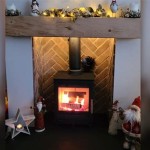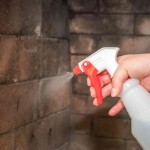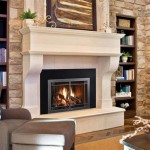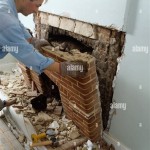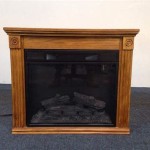Indoor/Outdoor Ventless Fireplaces: A Comprehensive Guide
Ventless fireplaces represent a modern approach to heating and aesthetic enhancement, offering the ambiance of a traditional fireplace without the complexities of venting systems. These appliances, designed for both indoor and outdoor use, operate by burning fuel (typically liquid propane or natural gas) in a highly efficient manner, minimizing emissions and eliminating the need for a chimney or flue.
The appeal of ventless fireplaces lies in their versatility and ease of installation. Unlike their vented counterparts, they can be placed in a wide range of locations, providing greater design flexibility. This makes them particularly attractive for homeowners seeking to add a fireplace to spaces where traditional venting is impractical or cost-prohibitive, such as apartments, basements, or outdoor patios. Furthermore, the absence of a chimney reduces heat loss, resulting in higher heating efficiency.
While ventless fireplaces offer numerous advantages, it is crucial to understand their operation, safety considerations, and maintenance requirements to ensure safe and effective usage. This article provides a detailed overview of indoor/outdoor ventless fireplaces, covering their types, benefits, safety mechanisms, installation guidelines, and maintenance procedures.
Understanding the Technology Behind Ventless Fireplaces
Ventless fireplaces utilize a unique combustion process that minimizes the production of harmful byproducts. The key to this process is a specially designed burner system that ensures complete combustion of the fuel. These burners typically incorporate a ceramic or metal matrix that promotes even distribution of the fuel and oxygen, leading to a cleaner burn.
The primary fuels used in ventless fireplaces are liquid propane (LP) and natural gas (NG). Both fuels are hydrocarbons, and when burned completely, they produce primarily carbon dioxide (CO2) and water vapor (H2O). The challenge lies in ensuring complete combustion to minimize the production of carbon monoxide (CO), a colorless and odorless gas that can be dangerous. Ventless fireplaces employ oxygen depletion sensors (ODS) to monitor the oxygen levels in the room. If the oxygen level drops below a certain threshold, indicating incomplete combustion and potential CO buildup, the ODS will automatically shut off the fireplace.
In addition to the ODS, many ventless fireplaces incorporate other safety features, such as flame failure devices (FFDs), which shut off the gas supply if the flame is extinguished for any reason. Some models also include overheat sensors that prevent the unit from overheating, further enhancing safety.
The efficiency of ventless fireplaces is typically very high, often exceeding 99%. This is because all the heat produced by the combustion process is released into the room, rather than being vented up a chimney. However, it is important to note that while ventless fireplaces are efficient heaters, they also release water vapor into the air. This can lead to increased humidity levels, which may be undesirable in certain climates or for individuals with respiratory problems. Proper ventilation is still necessary, even with ventless fireplaces, to manage humidity and ensure a healthy indoor air quality.
Types and Applications of Ventless Fireplaces
Ventless fireplaces are available in a variety of styles and configurations to suit different aesthetic preferences and heating needs. Common types include:
*Wall-Mounted Ventless Fireplaces:
These fireplaces are designed to be mounted directly on a wall, offering a space-saving solution. They are often used in smaller rooms or apartments where floor space is limited. *Freestanding Ventless Fireplaces:
These fireplaces can be placed anywhere in a room, providing greater flexibility in terms of placement. They are often designed to resemble traditional wood-burning stoves. *Ventless Fireplace Inserts:
These inserts are designed to be placed into existing fireplace openings, allowing homeowners to convert a traditional wood-burning fireplace into a ventless gas fireplace. *Ventless Fireplace Tables:
These are often used outdoors and combined with furniture features, such as a coffee table or dining table. It is used for both decoration and heating.The applications of ventless fireplaces are diverse, ranging from providing supplemental heating in residential homes to creating an inviting ambiance in commercial spaces. Outdoors, ventless fireplaces are commonly used on patios, decks, and in outdoor living areas to extend the use of these spaces into cooler months. The portability of some ventless fireplace models also makes them suitable for use in temporary settings, such as RVs or camping trips.
Choosing the right type of ventless fireplace depends on several factors, including the size of the space to be heated, the desired aesthetic, and the budget. It is important to consider the British Thermal Unit (BTU) rating of the fireplace to ensure that it is appropriately sized for the intended use. A fireplace that is too small may not provide sufficient heat, while a fireplace that is too large may overheat the room.
The choice of fuel, whether liquid propane or natural gas, is another important consideration. Natural gas is typically less expensive than liquid propane, but it requires a natural gas line to be installed. Liquid propane, on the other hand, can be stored in tanks, making it a more flexible option for locations where natural gas is not available.
Installation and Safety Considerations
Proper installation is crucial for the safe and efficient operation of ventless fireplaces. While some models can be installed by homeowners, it is generally recommended to have a qualified professional handle the installation, particularly if gas line modifications are required.
Before installing a ventless fireplace, it is essential to check local building codes and regulations. Some jurisdictions may have restrictions on the use of ventless fireplaces, or they may require specific safety features to be installed. It is also important to ensure that the room where the fireplace will be installed meets the minimum size requirements specified by the manufacturer.
During installation, it is important to follow the manufacturer's instructions carefully. This includes ensuring that the fireplace is properly leveled, and that all gas connections are tight and leak-free. If the fireplace is being installed in a location where it could be exposed to moisture, it is important to take steps to protect it from water damage.
Safety is the paramount concern when operating a ventless fireplace. While these appliances are designed to be safe, it is important to follow certain precautions to prevent accidents. These include:
*Never leaving the fireplace unattended while it is in operation.
*Keeping flammable materials away from the fireplace.
*Ensuring that the room is adequately ventilated.
*Regularly inspecting the fireplace for any signs of damage or malfunction.
*Having the fireplace serviced annually by a qualified technician.
Carbon monoxide (CO) detectors are essential safety devices for any home with a ventless fireplace. These detectors will alert occupants if CO levels rise to dangerous levels, allowing them to take action to prevent CO poisoning. It is important to install CO detectors on every level of the home, and to test them regularly to ensure that they are functioning properly.
It is also important to educate all members of the household about the safe operation of the ventless fireplace. This includes explaining how to turn the fireplace on and off, how to adjust the flame height, and what to do in the event of a gas leak or other emergency.
Ventless fireplaces are not designed to be used as the primary source of heat. They are intended for supplemental heating and aesthetic enhancement. Over-reliance on a ventless fireplace for heating can lead to excessive humidity and increased risk of CO buildup.
Maintenance and Troubleshooting
Regular maintenance is essential for ensuring the long-term performance and safety of ventless fireplaces. This includes cleaning the burner assembly, inspecting the gas connections, and checking the operation of the safety devices.
The burner assembly should be cleaned at least once a year, or more frequently if the fireplace is used regularly. This can be done by vacuuming the burner and removing any debris that may have accumulated. It is also important to inspect the burner for any signs of damage or corrosion.
The gas connections should be inspected periodically for leaks. This can be done by applying a soap solution to the connections and looking for bubbles. If a gas leak is detected, the gas supply should be shut off immediately, and a qualified technician should be called to repair the leak.
The operation of the safety devices, such as the oxygen depletion sensor (ODS) and the flame failure device (FFD), should be checked regularly. This can be done by following the manufacturer's instructions. If any of these devices are not functioning properly, the fireplace should not be used until they have been repaired or replaced.
Common problems with ventless fireplaces include:
*Pilot light not staying lit:
This can be caused by a dirty pilot orifice, a faulty thermocouple, or a low gas pressure. *Flame is yellow or uneven:
This can be caused by a dirty burner, a low gas pressure, or improper air mixture. *Odor when the fireplace is operating:
This can be caused by incomplete combustion, a gas leak, or a build-up of dust or debris in the fireplace. *Fireplace shutting off unexpectedly:
This can be caused by a faulty oxygen depletion sensor (ODS), a low gas pressure, or overheating.In many cases, these problems can be resolved by following the manufacturer's troubleshooting guide. However, if the problem persists, it is important to contact a qualified technician for assistance. Attempting to repair a ventless fireplace without proper training and experience can be dangerous.
Selecting the right fuel is also a part of maintaining a ventless fireplace. Only use the type of fuel specified by the manufacturer. Using an alternative fuel could damage the fireplace and create a safety hazard.
Finally, it's important to keep the area around the ventless fireplace clean and clear of obstructions. This will help to ensure proper airflow and prevent overheating.

Montigo Divine H Series Outdoor Ventless Ontario Hearth Fireplaces

Montigo Divine H Series Outdoor Ventless Ontario Hearth Fireplaces

Regal Flame Veranda Ventless Indoor Outdoor Fire Pit Tabletop Portable Bowl Pot Bio Ethanol Fireplace Realistic Clean Burning Like Gel Fireplaces Or Propane Firepits White Ca

Superior Vre 4300 Fireplace Vancouver Gas Fireplaces
Outdoor Lifestyles Fortress See Through Indoor Gas Fireplace Majestic S

Skypatio Tabletop Fireplace Heater Indoor Outdoor Ventless Table

Outdoor H38svo Real Fireplace Service Quality

Outdoor Vent Free 36 Complete Gas Fireplace Stainless Steel With Remote Control Vre3200 Vre3236
:max_bytes(150000):strip_icc()/ventless-gas-fireplaces-4160746-hero-f9d4bdcd9bd446eb84406de306f790ba.jpg?strip=all)
How To Pick Out A Ventless Gas Fireplace

Vent Free 42 Firebox With Stainless Steel Face Indoor Or Outdoor Vre4200 Series By Superior F4108
Related Posts


